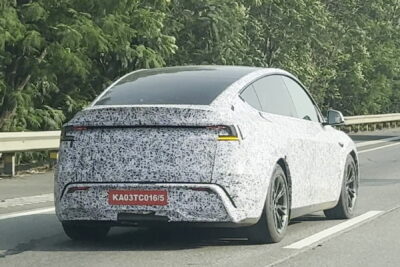DE: Nissan & partners complete V2G pilot for renewables
Transmission system operators TenneT, energy provider The Mobility House and carmaker Nissan have completed a vehicle-to-grid pilot project launched in 2018 to redistribute renewable energies in Germany.
The partners focussed on electric car batteries for storing and adding locally produced electricity into the grid in zones in North and South Germany controlled by TenneT. As part of the showcase project of the German Ministry (SINTEG), batteries from all-electric Nissan Leafs were used as storage devices for locally produced electricity to help stabilise the power grid during peak demand. SINTEG stands for ‘Shop Window Intelligent Energy – Digital Agenda for the Energy Turnaround’.
The project responded to a concern increasingly common in Germany, where now around 45% per cent of energy comes from renewables, so supply is volatile or at least unevenly distributed at times. To overcome this, the wind power available in northern Germany was used by the electric cars in that region. At the same time, electricity from fully charged Nissan batteries was fed back into the grid in the south instead of increasing fossil fuel-powered electricity generation. The partners stress that they also took the mobility and charging requirements of the vehicle users into account.
The conclusion: “The pilot project has shown that we can use electromobility in the future to control the weather-dependent renewable electricity production flexibly. That takes the strain off the electricity grid and helps us to limit expensive curtailment of wind turbines. The short-term flexibility that electric mobility provides us with can supplement the grid expansion and become an important building block for the energy transition,” said TenneT Managing Director Tim Meyerjürgens.
The project was launched in 2018 to find a solution to the increasing bottlenecks in the power grid. To date, network operators such as TenneT have had to regulate surplus renewable energy in the north of Germany and simultaneously ramp up conventional power generation in the south – “an expensive matter, especially at peak loads,” according to the grid operator. In 2017, for example, the costs for balancing the grid were just under one billion euros inside the TenneT area. A sum that is ultimately passed on to electricity consumers via the grid fees.
An intelligent redistribution measure based on e-vehicles could help to reduce this amount, according to the project partners’ calculations. They used the smart charging and energy management system ChargePilot. The loading control of the dispatch measures took place locally and in real-time – through the connection to the technology platform from TMH and a platform from TenneT. The Mobility House uses the same technology in the Renault-Nissan Alliance project in Porto Santo. Nissan EVs are equipped with the CHAdeMO standard, which already enables a bidirectional energy exchange.
Now with the German project completed, the partners intend to widen the applications to Europe. TenneT is currently working on a European platform with other transmission system operators. “This will allow small-scale, decentralised flexibilities such as electric cars to be integrated into the energy system on a large scale,” the company says. The Mobility House also equips company fleets with its charging and energy management system and is waiting for regulatory barriers to be resolved.





0 Comments